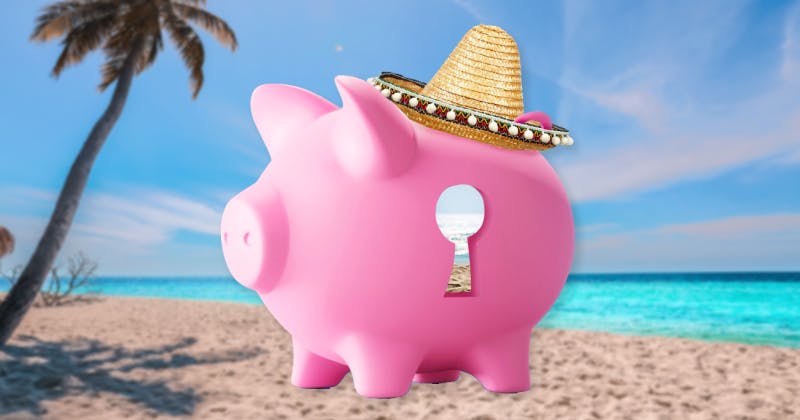
Endangered places around the world
With extreme weather conditions like heatwaves and flooding becoming more common by the day, we take a look at some of the places around the world that are increasingly at risk due to climate change.
Venice | Europe

Built on 120 islands and connected by a maze of canals and bridges, Venice is one of the most unique cities in the world. It's Renaissance-era culture, art and architecture, the Carnival of Venice that's world-famous for elaborate masks and costumes and, of course, the gondolas make Venice one of the world's most popular spots for tourists.
What makes Venice so unique is also what makes it so endangered. It's built on a foundation of timber piles driven deep into the lagoon, which are slowly being pushed into the mud and causing the city to sink. And rising sea levels aren't exactly helping, speeding up the process and causing more frequent flooding that damages its historic buildings. All that tourism has caused big problems too, straining the city's infrastructure, contributing to pollution and disrupting the lives of locals.
The Dead Sea | Asia

Bordering Jordan, Israel and the West Bank is the Dead Sea. It's one of the saltiest bodies of water in the world – so salty that people float effortlessly on its waters and most aquatic life can't survive, hence the name. The unique minerals found in its waters and mud are said to have therapeutic properties, attracting tourists and beauty brands the world over.
But its waters are shrinking at an alarming rate, which is undoubtedly a human-made problem. The main water supply feeding the Dead Sea is being used more and more for drinking water and irrigation – as the climate continues to warm and water sources become scarce, Dead Sea waters will be in even higher demand. Plus companies have taken lots of it to extract its minerals for health and beauty products. As more of the sea dries out, salt has sunk underground and caused sinkholes in the surrounding area, ruining beaches and infrastructure and driving farmers and local businesses out.
How to make your holiday more carbon neutral
We can all help to reduce global emissions by decreasing our carbon impact while on holiday. Here's 14 quick tips to make your next trip more environmentally friendly.
Find out more...Great Barrier Reef | Australia

The Great Barrier Reef is the world's largest coral reef and is renowned for its stunning biodiversity, marine life and underwater landscapes, making it one of the most iconic and sought-after destinations for divers, snorkellers, and nature enthusiasts. However, it's facing a range of environmental challenges caused primarily by humans.
Rising sea temperatures are causing coral bleaching, where the beautiful corals are weakened and lose their colour. Overfishing is another issue, upsetting the ecosystem that keeps the corals healthy, as is overtourism. Tourism is important for the local economy, but it has caused an overdevelopment along the coast and massive crowds that contribute to water pollution and the damage being done to the corals.
Everglades National Park | North America

The Everglades National Park in Florida is a unique and ecologically diverse area that boasts stunning landscapes, including sawgrass prairies, freshwater marshes, swamps dominated by cypress trees and mangrove forests. These stunning wetlands are home to alligators, crocodiles, rare bird species, manatees and more – they're a great place to explore on foot, by kayak or canoe or on an airboat tour.
But human activity is putting the Everglades and the species that call it home at risk. Its waters have long been drained and diverted for agriculture and urban development, which disrupts the ecosystem and the population of native species like wading birds and the endangered Florida panther. Invasive animals like Burmese pythons have been introduced to the area too, driving native species' out and upsetting the balance of the habitat, and a rise in sea levels has caused saltwater intrusion that negatively affects the health of freshwater wildlife.
Amazon Rainforest | South America

The Amazon is home to an incredible variety of plant and animal species, many of which you won't find anywhere else in the world. It's the world's largest tropical rainforest and is a vital part of the global ecosystem – it's called 'the lungs of the earth' for good reason. However, it's currently under threat due to a combination of human factors and environmental pressures.
Deforestation is a big issue, with large areas of the forest being cleared for agriculture, logging, mining and building infrastructure. Bad practices like slash-and-burn farming, where land is cleared by cutting and burning vegetation, are releasing harmful carbon dioxide into the atmosphere and disrupting the habitat, making species more vulnerable to extinction. They also marginalise indigenous communities who rely on the forest for their livelihoods.
The Good Trip Index
The Holiday Extras guide to travelling ethically, sustainably and well. This is the Good Trip Index.
Find out more...Madagascar | Africa

Like the Amazon, Madagascar has one of the most diverse array of plants and animals in the world. Explore its national parks and reserves and you'll discover lemurs, chameleons, rare orchids and baobabs, and landscapes that vary from lush rainforests to deserts and pristine beaches. It's perfect for everything outdoors, whether you love hiking, rock climbing, snorkelling, wildlife spotting or relaxing on the beach.
But similarly to the Amazon, deforestation is negatively impacting this biodiversity and causing a loss of habitats at an alarming rate, threatening the survival of many species only found on this island. Climate change is having an impact too, with unpredictable temperatures, rainfall patterns and rising sea levels causing further disruption to these habitats.
Antarctica

Antarctica is one of the most beautiful, undisturbed places in the world. Its vast ice sheets and glaciers are a sight to behold, and observing its landscapes and the penguins, seals and whales that live there is a once-in-a-lifetime experience. But much like the Arctic, climate change is causing significant problems.
Animals like the iconic emperor penguin and seabirds, as well as plant life, have adapted to survive the coldest of conditions, and as the area heats up and ice continues to melt the habitat will become less and less suitable for them. Tourism poses a threat too, potentially causing pollution and making it more likely that invasive species' will occupy Antarctica. And if the ice is allowed to keep melting, global sea levels could rise significantly. This wouldn't be good news for coastal regions worldwide, which could expect more extreme weather like flooding and erosion.
See a pattern? We've managed to name a place that's in critical condition from every continent. Climate change affects everyone, which is why it's so important to make sustainable choices wherever possible. For advice on how you can travel more sustainably, take a look at these tips put together by our charity partner and sustainable tourism experts The Travel Foundation.
How to travel more sustainably
Our friends at the Travel Foundation explain how to make your next trip more sustainable.
Find out more...









